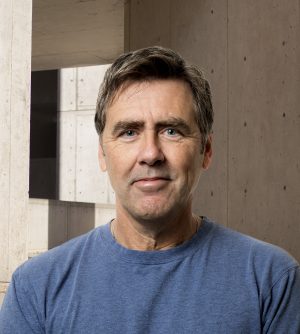
April 9, 2018
LA JOLLA—With forensic science facing mounting scrutiny as it plays an increasingly prominent role in the administration of justice, six scientists who recently served on the National Commission on Forensic Science are calling on the scientific community at large to advocate for increased research and financial support of forensic science as well as the introduction of empirical testing requirements to ensure the validity of outcomes. Their call to action appeared in the Proceedings of the National Academy of Sciences (PNAS) the week of April 9, 2018.

Click here for a high-resolution image.
Credit: Salk Institute
“Forensic reform is challenging because the field of law is based on historical precedent, whereas science builds on itself to advance continuously,” says Thomas Albright, professor and director of Salk’s Vision Center Laboratory who has studied why eyewitnesses fail. “But if the ultimate goal of a legal system is to deliver justice, then forensic evidence should be based on up-to-date methods that have been scientifically validated.”
Since the 1990s, when DNA exonerations revealed problems with some forensic disciplines, various groups have been calling for reform. This led to a landmark 2009 report by the National Academy of Sciences (NAS) that found many forensic practices were highly subjective and paved the way for the 2013 establishment of the National Commission on Forensic Science to examine such practices. A number of independent scientists served on the commission, along with forensic scientists, attorneys, judges and law enforcement personnel, from 2013 to 2017 when the Department of Justice declined to renew its charter.
Six of the independent scientists—Albright, Suzanne Bell of the University of West Virginia; Sunita Sah of Cornell University; S. James Gates, Jr., of Brown University; M. Bonner Benton of the University of Arizona and Arturo Casadevall of Johns Hopkins University—write in the new paper that the complex methodologies of forensic science, which range from DNA analysis to pattern recognition to chemical composition, must be subjected to scientific testing rather than relying on historical precedent. They cite the example of bite-mark identification, which has been scientifically discredited and has resulted in false convictions, but continues to be accepted in U.S. courts due to precedent.
“In many forensic procedures, such as fingerprint or footprint or bullet matching, decisions about the similarity of visual patterns are made by people—and people make mistakes,” says Albright, who holds the Conrad T. Prebys Chair in Vision Science. In 2017, Albright published a paper in PNAS about an NAS study on eyewitness testimony that described why identification errors occur and how they can be prevented. “We encourage the scientific community to welcome forensic scientists into their ranks to help identify the causes of forensic failures, predict when they might occur and lend support to developing strategies to mitigate or prevent them,” says Albright.
JOURNAL
PNAS
TITLE
A call for more science in forensic science
AUTHORS
Suzanne Bell, Sunita Sah, Thomas D. Albright, S. James Gates, Jr., M. Denton Bonner and Arturo Casadevall
Office of Communications
Tel: (858) 453-4100
press@salk.edu
Unlocking the secrets of life itself is the driving force behind the Salk Institute. Our team of world-class, award-winning scientists pushes the boundaries of knowledge in areas such as neuroscience, cancer research, aging, immunobiology, plant biology, computational biology and more. Founded by Jonas Salk, developer of the first safe and effective polio vaccine, the Institute is an independent, nonprofit research organization and architectural landmark: small by choice, intimate by nature, and fearless in the face of any challenge.